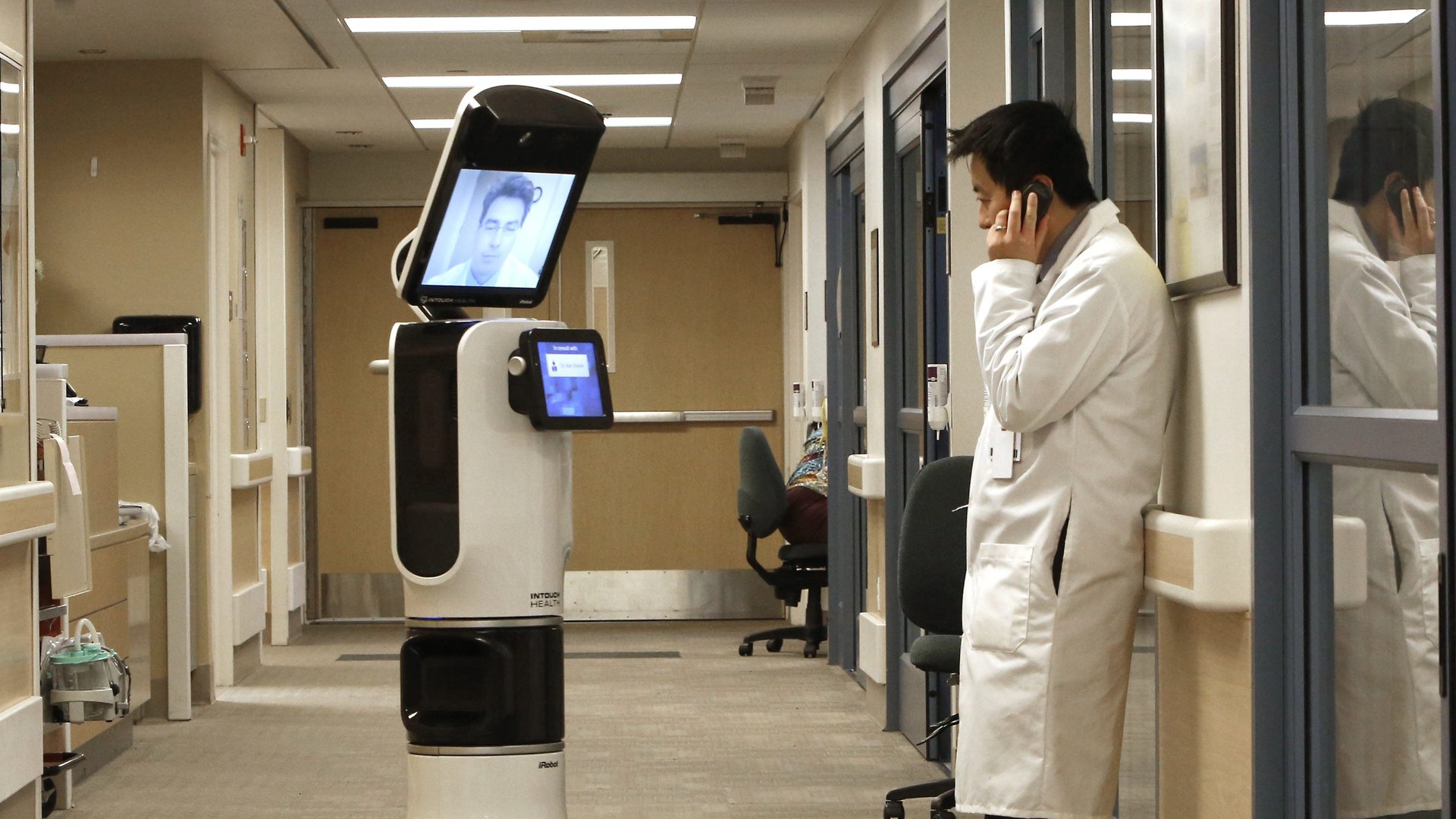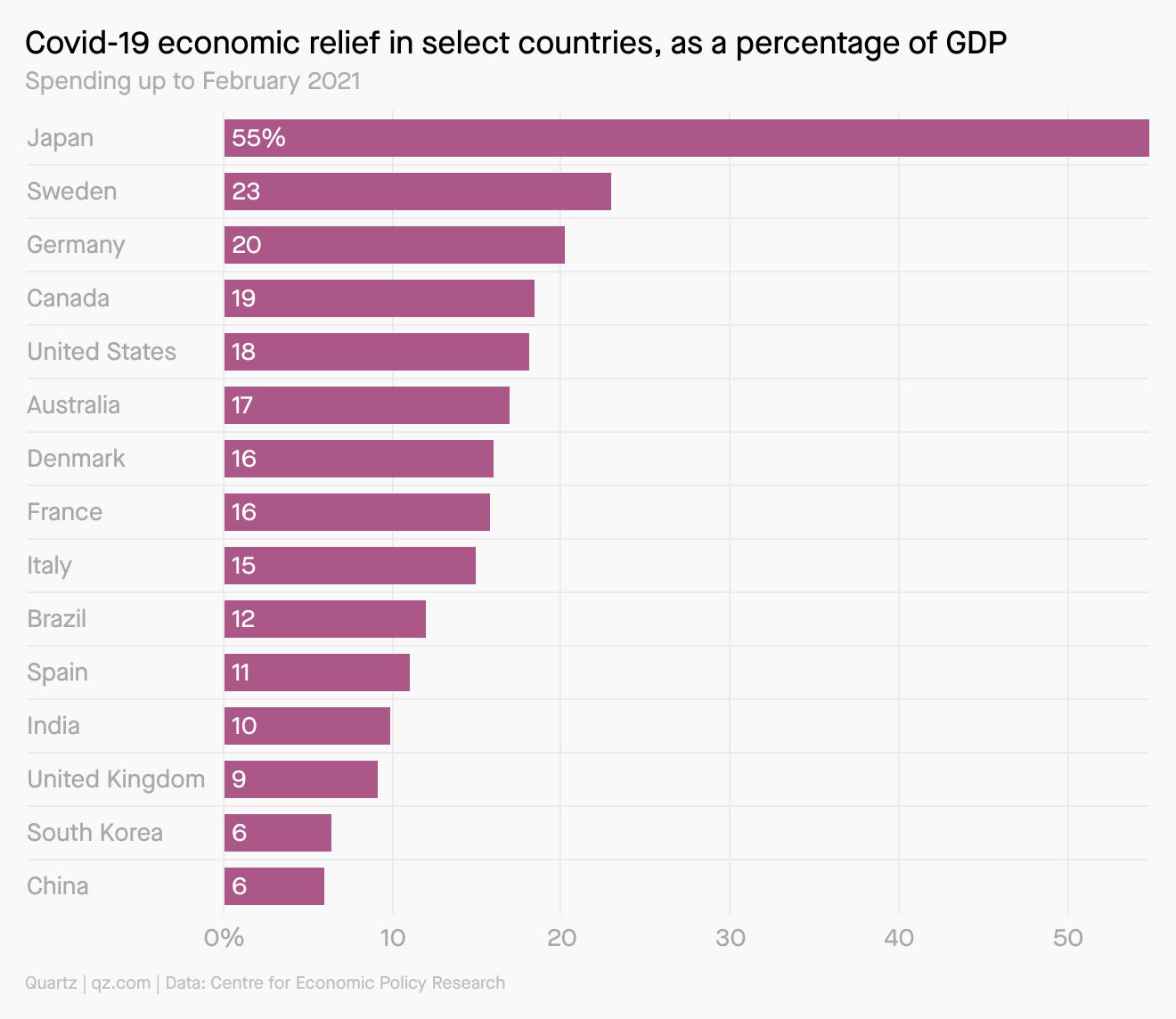Phoning it in?
Hello Quartz readers,


Hello Quartz readers,
Covid-19 was good for very few things. One of them is telehealth.
Telehealth or telemedicine—interchangeable terms for interacting with a healthcare professional remotely—increased 54% in the US in 2020 compared to 2019. The global telehealth market, which recorded $61 billion in annual sales in 2019, is projected to reach $560 billion by 2027.
What happened, of course, was that the biggest health crisis to hit the world in a century also forced people to shun in-person interactions. There were hundreds of telehealth companies pre-pandemic, but now venture capitalists are betting hard on more growth. In the US, investments in telehealth hit $4.3 billion last year, up from $1.8 billion in 2019. Meanwhile, Italian prime minister Mario Draghi used his first parliamentary address to highlight telemedicine as the future of healthcare.
Why did the shift take so long? It seems that both patients and doctors who tried telehealth as a pandemic compromise found they actually liked it. “There is a perception that telemedicine can be less personal,” one pediatrician told Quartz, “but in many ways, it’s just another way to meet the patient’s needs.”
Telehealth’s continued growth—particularly in the US’s complicated healthcare environment—depends on a range of factors, from the loosening of regulations to the expansion of broadband access in rural areas. It also depends on the continued flow of VC dollars. And of course one big question looms over everything: When Covid-19 is behind us, will people continue to call the doctor? —Annalisa Merelli
✦ We dug into that very question in this week’s field guide, which also looks at telehealth’s potential to make healthcare more equal, increase the importance of your internet connection, and foment a cybersecurity nightmare. Not a member yet? Check out the full guide by dialing in to a seven-day free trial.
Three dinner-table convos
💉 China’s vaccine rollout is slow going. As of Feb. 28, the country had only vaccinated around 3.6% of its 1.3 billion citizens. The size of China’s population is definitely a factor, but ironically so is its early success containing the virus. “The situation on the ground in China is very much different [than the US and UK],” one source told us. “You don’t have the same sense of urgency because there are so few cases.”
👶 Nobody puts baby in a corner of the market. Markets, as a technology for discovering prices and organizing economic production, have a lot going for them. But as a tool for solving fundamental social challenges, they can fall short. One of the major elements of the Biden administration’s American Rescue Plan is an attempt at a hybrid solution: the conversion of the child care tax credit into a child care allowance. It’s a sign that US policymakers are starting to once again consider universal benefit programs the foundation of a dynamic, equitable economy.
💰 America’s relief spending eclipses all of Europe’s. The American Rescue Plan’s $1.9 trillion price tag is roughly twice the size of the Obama administration’s relief package during the 2009 financial crisis, and brings the US’s total pandemic relief spending to 27.1% of GDP. That makes the US the third highest spender globally. In 2020 alone, the US increased its fiscal spending per person by nearly three times that of EU countries compared to the previous year.

525,600 minutes
One year ago this week, Quartz entered lockdown mode as the scope of the pandemic was becoming painfully clear. To commemorate 12 months of stress, grief, anxiety, uncertainty, and sweatpants, here are some snapshots of the Pandemic Year, courtesy of health reporter Katherine Foley’s sentence-a-day diary.
Feb. 27, 2020: I think this is the first day I realized coronavirus may be big.
March 4: Sick, but I had this wonderful realization that the body is made of problem solvers.
March 12: I fully went to the roof to scream today and ya know, I felt better.
March 13: This may be a very long quarantine.
April 22: Brought Penelope [cat] home! She’s afraid of everything so far.
Sept. 10: Today’s self-care is skipping the workout.
Dec. 4: Played Wingspan with Ben and danced real goofy.
Dec. 31: I worked, I walked, I played Zelda—a good end of the year.
Jan. 7, 2021: It’s kind of freeing to say you’re sad.
Feb. 21: Came back from mountain house—it’s good to love your home.
Feb. 23: Sometimes you’ve gotta acknowledge your feelings to get past them.
March 11: Played tennis with Dad today! It was fun.
Btw, in addition to being our in-house Covid expert, Katherine is also a font of wisdom on staying calm, cool, and collected while dealing with, well, life. From the archives: Her treatise on finding joy in hard times, what kelp can teach us about thriving amid uncertainty, and that time she kept a happiness jar.
You got shot?
Earlier this week, the CDC released its long-awaited guidelines on what’s safe for people vaccinated against Covid-19. Are you one of those people? (Congrats!) Here’s a breakdown of the guidance:
✅ Visiting other vaccinated people. It takes two weeks for the body to maximize its antibody production after a vaccine jab. After that, people can safely be inside with others who have also been vaccinated without wearing a mask or distancing themselves.
🤔 Visiting with those who aren’t yet vaccinated. Scientists still don’t know if vaccinated people can transmit SARS-CoV-2 to people who are unvaccinated. That’s why the CDC recommends that people who already got their shots gauge the risk of those who haven’t before get-togethers.
🚫 Visiting with multiple households or larger gatherings. The CDC still recommends masking up when indoors with people from multiple households, and following mask requirements in public settings. To be safe, keep avoiding large gatherings entirely.
Do you have more next-wave vaccine questions? We answered a bunch of them in last week’s Q&A with pulmonologist Panagis Galiatsatos. You can watch or read the recap here. And don’t hesitate to reach out.
That’s the trick
For many people, speaking to a crowd on Zoom can be more nerve-wracking than making a presentation in person: Floating faces don’t offer up many physical cues. Cognitive scientist and Barnard College president Sian Beilock has this advice before your next presentation:
By the time you need to perform under pressure, hopefully you’ve practiced enough that some of what you need to do will come automatically. At that point, excessive concentration can lead to “paralysis by analysis.” So the day of the performance, in the 15 minutes or so before you take the floor, focus on something else—anything but what is about to happen.
Case in point: Beilock reads a magazine before a big talk.

Essential reading
- The latest 🌏 figures: 118.2 million confirmed cases; 66.9 million classified as “recovered;” 326 million vaccine doses administered.
- Just the vax, please: India’s homegrown vaccine has an uphill battle to gain trust.
- Pop sockets: Welcome to the microbubble economy.
- A walk in the park: Disneyland is finally ready to reopen.
- It’s alive! “It” being our real-time dashboard on Covid-19’s economic impact.
Our best wishes for a healthy day. Get in touch with us at [email protected], and live your best Quartz life by downloading our iOS app and becoming a member. Today’s newsletter was brought to you by Annalisa Merelli, Jane Li, Tim Fernholz, Roya Wolverson, Katherine Foley, Lila MacLellan, and Kira Bindrim.